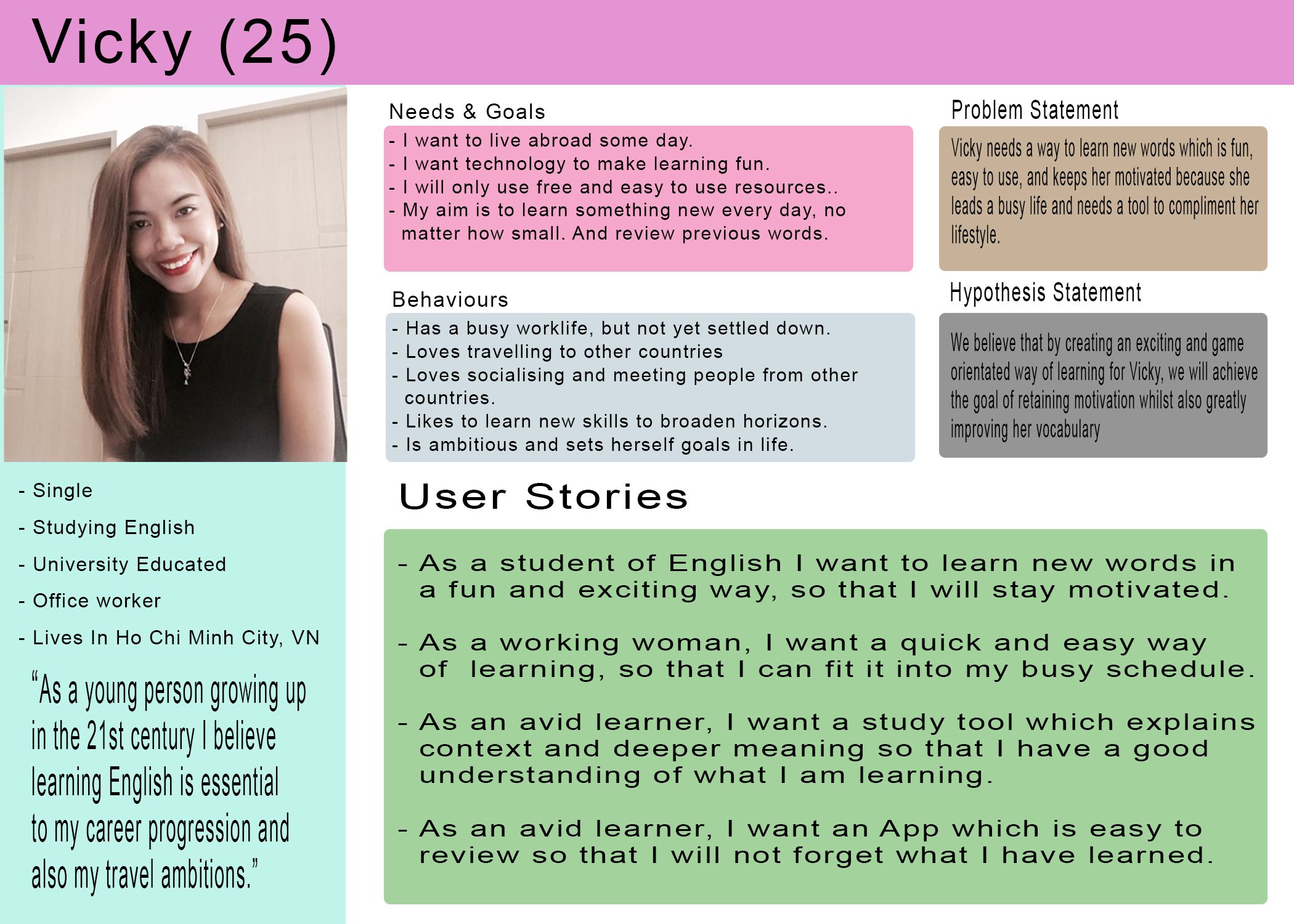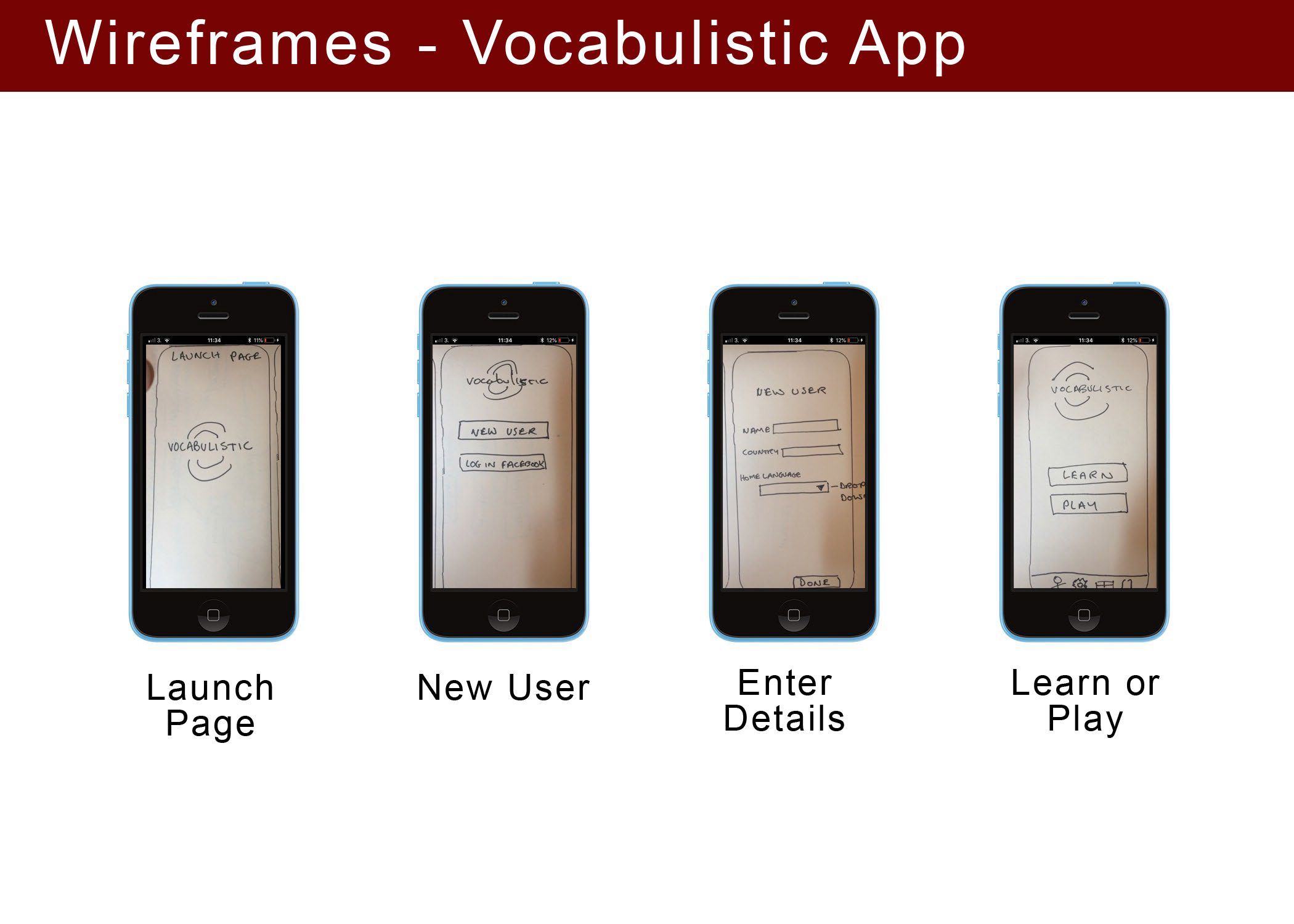Case Study
VOCABULISTIC
Empowering people to learn new vocabulary
Client
Career Foundry Student Project
Time
20 Hours
The Goal
This was my introduction to UX and it introduced me to some of the most important terms, tools, and techniques in the field of user experience design.
In this project, I picked apart the experience of memorizing and understanding new concepts, techniques, and terms by researching and designing an app to learn new vocabulary. The goal of this project was to practice using the design process and learn important vocabulary along the way.
The Challenge
My challenge was to design an app that users would come back to again and again. It had to be simple, useful, fun and engaging. Rewarding and motivating the user was key to keeping the user engaged.
My Role and Responsibilities
In this project I took on the role of sole UX designer. It was my responsibility to conduct user research by engaging in user interviews. I created a user persona from my research and then user flows to map out the information architecture. I then had to sketch out low fidelity wireframes and create a prototype. The project was rounded off by usability testing and a test report.
Tools
Pen and paper, Prott and Photoshop.

The Design
Who: It was up to me to define my target audience. I did this by engaging in user research on people whom I knew had learned languages in the past.
What: A mobile application focused on learning new vocabulary.
Where: Location and context ultimately depended on my target users. Once I had determined the “who,” I imagined them using the app for 5–10 minute intervals, perhaps at a cafe, in bed, or on a bus.
Why: It can be difficult to keep track of all the jargon when studying a new discipline. Students need a way to methodically categorize, reference, and study new vocabulary and concepts so they can move forward confidently in their field.
Discover – Define – Ideate – Test
Discover and Define
Competitive Analysis
The first step in the process was to examine what my competitors were doing in the way of vocabulary apps. I took note of the pros, the cons and made a summary of each app. The three apps I examined were Tiny Cards, Quizlet and Animals and Tools.

User Interviews
Then, to get a better understanding of my target group I conducted user interviews with three potential users. I selected these interviewees on the basis that they had experience in learning languages in the past.

User Personas
After the interviews I collated all the information and created my Proto Persona Vicky. Vicky was to represent my target user group. Her persona was divided into needs and goals and behaviours. I created a problem and a hypothesis statement for her. To make Vicky more human and a persona I could better visualize I gave her a photo, statistics, a quote and finally I created user stories for her.

Ideate
Information Architecture
Using the user persona as a guide I then created some user flows which visualized the most important functions of the app.

Low Fidelity
Working off the user flow I began sketching out an outline of the app. Using Prott I then inserted the low fidelity wireframes into a prototype.

Test
User Testing
The next phase was to test my prototype with potential user. This enabled me to gather data about the information architecture and the functionality. I formulated a test script and a test plan and conducted usabilty tests with three potential users.


Final Showcase
Outcome
The end result of my work was a game based vocabulary learning app where users can battle each other whilst also learning new words. From my research I learned that the game element where users could level up would be a motivating factor for the user to use the app again and again. Therefore as you can view in my prototype the learning is game based, with also a social media aspect to it.
This introductory project came to an end with the completion of my user testing. It gave me a brief overview of the early stages of UX methodology.
Retrospective
What went well..
This project really gave me a feel for UX and gave me my first chance to do user research and testing. It was an eye opener for me to hear what my different users had to say and then to apply the research to my project via my user persona. I was always a budding artist so I enjoyed the sketching and prototyping also.
Challenges..
Seeing as this was my first foray into user research it was a challenge for me to come up with the correct questions to ask my interviewees. Also nailing them down for an interview was tricky and led to that part of my project taking longer than expected.
